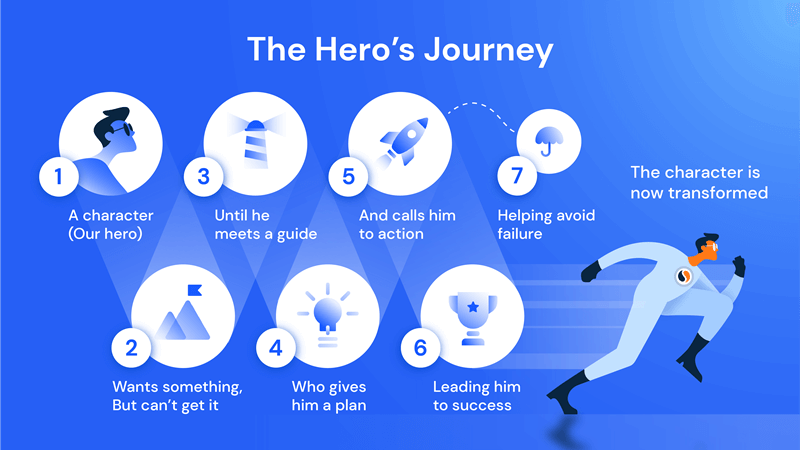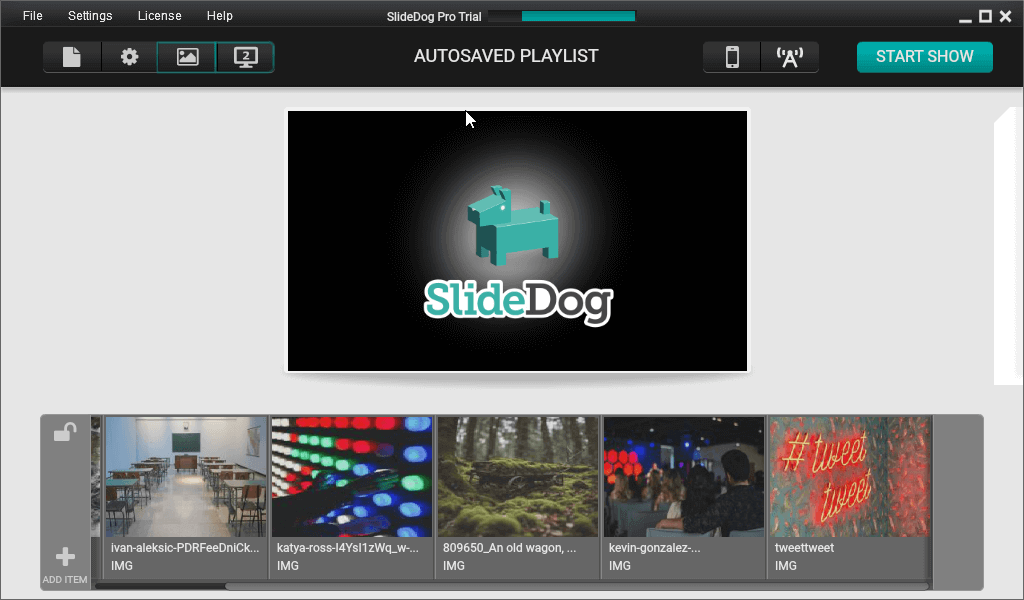Top 20 Presentation Skills You Need to Wow Your Audience
Pick up the key presentation skills, including confident delivery, preparation, breathing techniques, and more!
Dag Hendrik Lerdal

Standing in front of an audience and giving a presentation isn’t a walk in the park. Sure, it comes naturally to some people, but others have to work hard to cultivate the skills to make them master presents.
If you’re looking for ways to elevate your presentation, then you’ve come to the right place. In this article, I’ll walk you through the top 20 presentation skills you need to wow and captivate your audience.
1. Master Verbal Communication
Public speaking is a bit like a conversation on steroids. To ace it, your words need to be clear, concise, and concrete. No one likes a rambler. Speak to the point, ditch the jargon, and offer real examples. Remember, your audience is not here for a linguistic acrobatics show – they just want to hear what you have to say, plain and simple.
How to master verbal communication:
- Get straight to the point; avoid unnecessary preamble.
- Eliminate filler words that dilute your message.
- Use language that anyone, regardless of expertise, can understand.
- If you must use technical terms, provide simple explanations.
- Ground your ideas in real-life situations.
- Stories and examples make your content relatable and memorable.
2. Show Your Leadership
Have you ever been in a room where someone walks in, and you just know they’re in charge? That’s the power of leadership in public speaking. Establish your presence. Confidence is your ally; speak with conviction, maintain eye contact, and let your body language scream: “I got this!” When your audience sees you as the captain of the ship, they’ll willingly follow your lead.
How to show your leadership:
- Enter the room with confidence and purpose.
- Project an aura of authority through your demeanor.
- Speak with conviction and assurance in your voice.
- Believe in your message, and your audience will, too.
- Stand tall, use purposeful gestures, and avoid nervous tics.
3. Using Storytelling to Your Advantage
Let’s face it: nobody remembers a presentation that’s dryer than last week’s leftover pizza. Spice it up with storytelling. Whether it’s a personal anecdote or a gripping case study, hook your audience from the start.
Make them care about your message by weaving it into a story. It’s the difference between a monologue and a memorable experience.
You can also try common storytelling techniques, like in the example from SimilarWeb below:

How to use storytelling to your advantage:
- Engage your audience emotionally by connecting facts and concepts to relatable narratives.
- Begin with a captivating story to grab immediate attention.
- Weave your message into a story that resonates with your audience.
4. Understanding Yourself Is a Critical Presentation Skill
Before you can lead others, you’ve got to lead yourself. Know your strengths and weaknesses. Embrace what you’re good at, and be honest about where you can improve. Confidence comes from self-awareness, not perfection. Lead with your strengths, and your authenticity will do more for you than a rehearsed facade ever could.
How to understand yourself for presentations:
- Identify your strengths and leverage them in your presentation.
- Acknowledge areas for improvement without fear.
- Authenticity is more compelling than perfection; let your audience see the real you.
- Lead with honesty, and your audience will connect with your genuine approach.
5. Your Presentation Delivery Matters
Presenting isn’t just about what you say; it’s how you say it. Use body language to punctuate your points – it’s the exclamation mark to your words. Pauses are not awkward silences but spaces where your audience absorbs and appreciates your message. Your delivery is critical to connecting and resonating with your audience.
How to improve your delivery:
- Practice your presentation so it sounds more natural and fluent.
- Be aware of your body language and tone.
- Avoid fillers like “um” and “uh.”
- Speak with confidence and authority.
6. The Art of Persuasion Is a Presentation Skill, Too!
Think of your presentation as a friendly sales pitch – and you’re selling ideas instead of products. That’s where the art of persuasion comes into play. Clearly outline the benefits, address concerns upfront, and sprinkle in some compelling evidence. Leave your audience nodding their heads, thinking, “I’m in!”
How to be more persuasive:
- Start with a compelling hook to grab your audience’s attention.
- Clearly articulate the benefits of your ideas in simple language.
- Anticipate objections and address them during your presentation.
- Incorporate real-life examples and data to support your points.
7. Active Listening
Sure, you’re the one doing the talking, but that doesn’t mean your audience can’t get in on the action. In fact, the best presentations are a two-way street. Active listening is your backstage pass to audience participation. Respond to questions, gauge reactions, and adjust your tone accordingly. Remember, it’s only about being heard but also hearing your audience.
How to practice active listening when presenting:
- Encourage questions, comments, and interaction.
- Observe your audience’s body language and facial expressions.
- Be flexible with your tone based on audience engagement.
- Actively listen to questions and respond thoughtfully.
8. Develop Networking Skills
Conference speaking is like a professional mixer with a microphone. Before you hit the stage, work the room. Learn about your audience, their interests, and their pain points. Then, weave those insights into your talk.
How to use networking with your presentations:
- Engage with attendees before your presentation begins.
- Discover the interests and pain points of your audience.
- Make yourself available for further conversation after your talk.
9. Manage Your Time and Keep Things Organized
The last thing you want is for your audience to feel like they’re on a mental rollercoaster. Organize your thoughts in a logical flow, creating a journey for your audience. Time management is your co-pilot; stick to it like glue. Practice your presentation to know how long each section will be, and trim off any fat if things go too long. And leave time for you to interact with the audience.
How to improve your presentation organization skills:
- Structure your presentation logically.
- Rehearse to gauge time for each section.
- Remove unnecessary content to stay within time limits.
- Plan for interactive segments during your presentation.
10. Utilizing Visual Elements in Your Presentations
Your slides are there to support, not steal the show. Keep them brief, clear, and visually striking. Ditch paragraphs and bullet points for videos and gifs, and let visuals speak volumes. Your audience should be able to glance at a slide and instantly grasp the message.
- Replace text-heavy slides with visuals, videos, and gifs.
- Make your slides easy to understand at a glance.
- Use visuals to add dynamic elements to your presentation.
11. Managing Your Emotions During a Presentation
Getting on stage and speaking in front of a room of people isn’t anything to be scoffed at. In fact, around three out of four people might break a sweat at the mere thought of it. But here’s the deal – embrace the nerves. They’re the butterflies that remind you it matters. Manage your emotions like a rockstar, especially when the unexpected happens. Handling rejection, like a heckler in the crowd, is just part of the gig. Keep your cool, stay focused, and you’ll own the room.
How to manage your emotions when presenting:
- Understand that feeling nervous is natural.
- Channel nerves into enthusiasm and energy.
- Concentrate on your message to maintain composure.
- Realize that surprises may happen.
12. Be a Problem Solver
A great presentation provides a solution to the audience, even if they don’t immediately realize it. Identify the problems your audience faces and present your content as the remedy. Be ready to engage in problem-solving on the spot. Whether it’s answering tough questions or tackling issues in real time, providing real solutions will make your presentation unforgettable.
How to be a problem solver:
- Identify the problems your audience might be facing.
- Prepare for the tough questions ahead of time.
- Be ready to tackle problems as they arise during the presentation, whether they are tech issues or unruly participants.
- Ensure that your content directly addresses the audience’s concerns.
13. Learn to Research and Come Prepared
A presentation without solid facts lacks substance. Conduct thorough research to parse out statistics, facts, examples, and stories that bolster your message. Being armed with well-researched info not only makes you more credible but also shows your audience that you mean business.
And this goes beyond your subject matter. Also, research your audience to understand the best way to resonate with them. Are they industry experts? What is the average age range? Speaking to Gen Z requires a different approach than speaking to Boomers.

How to research and be prepared for your presentation:
- Primary and reliable sources for your stats and facts.
- Provide real-world examples that support your message.
- Adapt your presentation style to resonate with the specific audience characteristics.
14. Flex Your Funny Bone
You don’t need a stand-up routine, but a dash of humor can turn a good presentation into a memorable one. It’s like seasoning – a pinch is often enough, and too much ruins the dish. Relatable anecdotes, witty remarks, or a well-timed joke can break the ice and keep your audience on their toes. Remember, it’s a presentation, not a eulogy – see, that’s a joke.
How to add humor to your presentation:
- Use puns or inside jokes that resonate with your audience.
- Err on the side of caution – if you think it might offend someone, leave the joke out.
- Place jokes strategically for maximum impact.
15. Connecting with Eye Contact
When you’re chatting with a friend, you look them in the eye, right? The same goes for your audience. Connect and engage by making eye contact. It’s not a staring contest, so pick friendly faces from the left, center, and right. Hold that gaze for 5-10 seconds, then shift. It’s a simple gesture to make your audience feel seen and heard.
How to properly make eye contact:
- Don’t single out an individual and only focus on them.
- Walk around the stage, moving your eyes from one side to the other.
- When making impactful points, don’t be afraid to hold your gaze.
16. Know Your Stuff Inside Out
The best presenters don’t read off scripts or stand there reading their slide bullet points. You need to memorize your presentation inside out – every word, every pause, every gesture. As an added bonus, it helps you with time management and organization, like I mentioned above. And it will give you that boost of confidence that comes from knowing what you’re talking about and not simply guessing.
How to memorize your presentations:
- Practice your presentation weeks in advance.
- Use your slides as “reminders” to guide the presentation.
- If you can, record your speech and listen to it regularly.
17. Use Breathing Techniques
Before you step into the spotlight, take a moment to breathe. Learn a breathing technique to calm those pre-presentation jitters. Slow, deliberate breaths can lower anxiety and bring a sense of calm. And it helps ground you in the moment so when you step on the stage, you’re ready to wow your audience.
Effective breathing techniques:
- Take slow, deep breaths through your nose, hold for a few seconds, and exhale through your mouth.
- Focus on your body during this time.
- While on stage, take gentle breaths between pauses.
18. Using Repetition to Hammer Ideas Home
Ever had a catchy tune stuck in your head after hearing it a few times? Repetition works in presentations the same way. Repeat your core ideas throughout your talk. Of course, you don’t want to come off as annoying or treating people like they’re unintelligent. But by repeating the main points of your presentation, you can ensure that people at least leave with the important parts.
How to use repetition to enhance your presentation:
- Strategically place your core idea throughout the presentation.
- It doesn’t need to be verbal – include multiple slides that re-iterate the idea.
- Engage the audience and ask them questions to make them think about the main points.
19. Speaking Loudly and Clearly
The last thing you want to do when presenting is sound like there’s a spoonful of peanut butter in your mouth. Speak loudly and clearly, enunciating your words with precision. You not only want to be heard, but you want to be understood. Articulate each syllable, speak in a natural cadence, and take the necessary pauses to let your message sink in. A clear voice cuts through the noise and commands attention.
How to speak loudly and clearly:
- Project your voice from your chest.
- Open your mouth wide when speaking.
- Slow things down and clearly communicate each word.
20. Being a Show(wo)man
Welcome to the era of short attention spans and viral videos. To keep your audience hooked, channel your inner show(wo)man. You don’t need to juggle fire (unless that’s your thing) but about infusing your presentation with elements that grab attention – games, visuals, questions, and stories.
Make it a performance, not a lecture.
But again, don’t overdo it – the goal is to educate AND entertain. The two need to work in harmony.
How to be a true show(wo)man:
- Be animated with your speech – move around, use hand gestures, etc.
- Use props and other assets to get your point across.
- Whether it’s a suit or casual wear, dress for the part.
- Encourage the audience to participate with you, e.g., call and response.
4 Best Practices and Tips to Supercharge Your Presentations
While these 20 skills are a must-have for taking your presentations to the next level, here are a few best practices that you can use in combination with them.
Practice Makes Perfect
You want to rehearse your presentation like you’re preparing for a concert. The more you run through it, the smoother it gets. It’s not about memorizing every word but being more familiar with the structure. Once you have the structure down packed, you make adjustments on the fly and go through your presentations with confidence.
Use Metaphors, Similes, and Rhetorical Questions
Remember in school when you learned about literary techniques like metaphors and similes? Well, it’s time for them to shine. They add vibrancy to your speech, and when done right, they can provide the audience with thought-provoking insights. And hey, don’t forget to throw in some rhetorical questions. They’re good because they engage the audience while still keeping you in control.
Avoid Passive Voice
Passive language like “The throne was being desired by Jon Snow” makes your speech more wordy and confusing than it needs to be. Instead, use an active voice like “Jon Snow desired the throne” to make your message more direct and concise. Sure, you want to sound more authoritative and confident, but a passive voice does the opposite. Keep things straight to the point and use the least amount of words possible.
Join Public Speaking Groups
You know what they say, “It takes a village to raise a child.” The same goes for improving your presentation game. Join public speaking groups – online or in your neighborhood – and soak in the wisdom. Not only do you get to flex your public speaking muscle, but you also get invaluable feedback from others looking to do the same.
Bonus: Use Tools to Spice up Your Presentations
Ready to elevate your presentations? With seamless integration of multimedia elements, SlideDog transforms your presentations into dynamic and captivating experiences. Elevate your storytelling, engage your audience, and leave a lasting impression.
It’s time to step into the spotlight with confidence – let SlideDog be your guide to presentation excellence.

Your slides will thank you, and your audience will too.
Ready, set, SlideDog!


Thank you for sharing these invaluable tips on mastering presentations! Building upon the discussion of presentation tools, I’d like to highlight the importance of incorporating interactive elements to truly captivate audiences. Platforms like
https://mentimeter.com
https://kahoot.it
https://slido.com
https://polleverywhere.com
https://letsattend.io
offer dynamic features such as polls, quizzes, and live Q&A sessions, enriching presentations and getting meaningful engagement. Integrating these audience-engaging tools can elevate the overall impact of a presentation, making it more memorable and interactive for everyone involved.